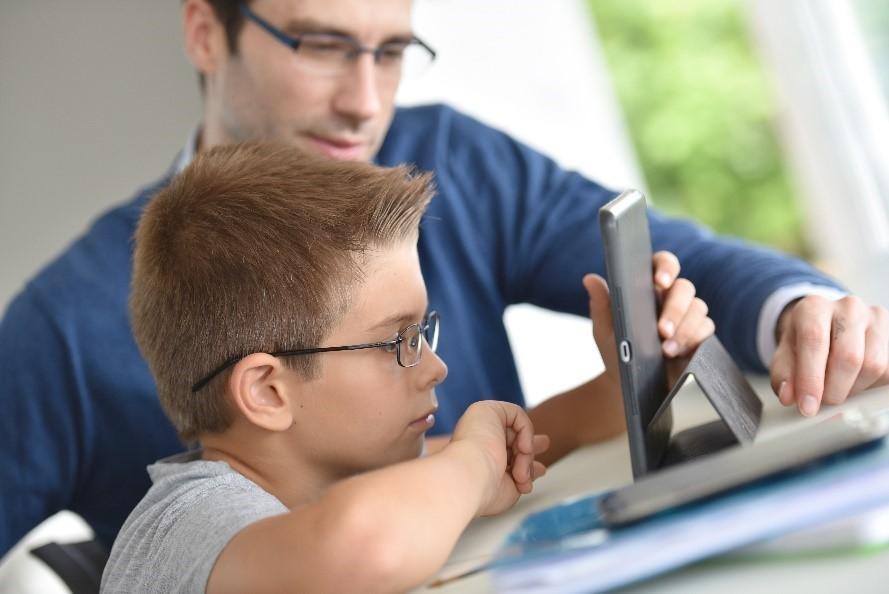Is too much screen time bad for your kids’ eyes? The term screen time is often used to scare parents who use technology to distract or entertain their children but what about when our children are spending more of their time in front of a screen for schoolwork and that includes television, computers, tablets and smartphones.
The easy accessibility of digital devices means that young children are spending more time than ever before looking at screens. However, given current lockdown restrictions and with schools being closed to the majority of children, much of a child’s learning is taking place online. Added to this our child’s down time is often spent online, watching on demand programmes and gaming.

The 20-20-20 rule
Lengthy screen time can lead to tired and uncomfortable eyes. One simple explanation for this is the well-known fact that when we stare at screens our eyeblink rate goes down from around 14 blinks per minute to 8 blinks with close-up tasks. We can be a bit lazy with blinking in this scenario too as we don’t always manage a complete blink! All of this leads to tired, red eyes towards the end of the day. So the advice on digital device usage and other near work suggests that after 20 minutes of near work, look at least 20 metres away for at least a 20-second break to give the eyes a rest.
Do screens make my child’s vision worse?
Education and near work have been linked with the development of short-sightedness (where glasses are needed to see things like white boards at school or the T.V.) Research studies have investigated if digital screen time is a risk factor for myopia but they have not found any evidence to support this and the prevalence of short-sightedness was rising long before digital devices became popular.

However, we are usually indoors when using a digital screen. Research shows that children who spend time outdoors are less likely to develop short-sightedness even if they do use screens a lot of the time. We think it is the much brighter level of light that the eye receives when outdoors that is the important factor here. So while we need to embrace the technology to help learning, our advice is to get your child to take frequent breaks from screens and to get outside more for some daylight – something that might benefit us all.
Lanca C and Saw S-M. The association between digital screen time and myopia: A systematic review. Ophthalmic Physiol Opt 2020; 40: 216–229.
Jaiswal S, Asper L, Long J, et al. Ocular and visual discomfort associated with smartphones, tablets and computers: what we do and do not know Clin Exp Optom 2019; 102: 463–477.
Xiong S, Sankaridurg P, Naduvilath T, et al. Time spent in outdoor activities in relation to myopia prevention and control: a meta-analysis and systematic review. Acta Ophthalmol. 2017;95:551‐566.






